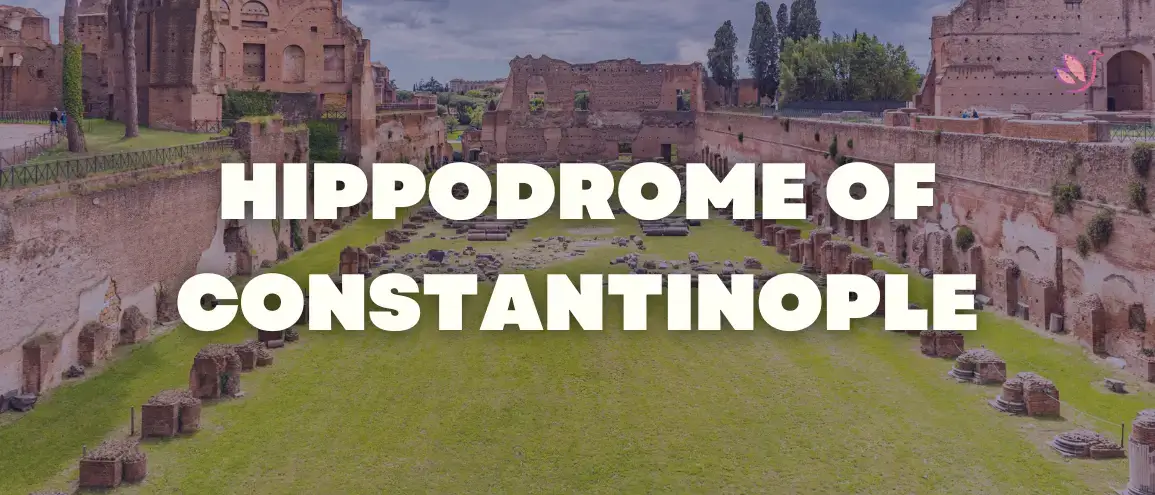Hippodrome of Constantinople

Hippodrome of Constantinople: A Glimpse into Istanbul’s Imperial Past
The Hippodrome of Constantinople, also known as the Sultanahmet Square, is a fascinating relic of the Byzantine Empire. Once the center of public life in the ancient city of Constantinople (modern-day Istanbul), this historic arena was the site of chariot races, imperial ceremonies, and various public spectacles. Today, the Hippodrome remains a popular tourist attraction and a symbol of Istanbul’s rich history.
Why Visit the Hippodrome?
- Byzantine Heritage – The Hippodrome was at the heart of Byzantine culture, serving as a venue for not only races but also public gatherings and political events.
- Architectural Remains – While much of the Hippodrome has been lost to time, its ancient monuments and structures still stand in Sultanahmet Square.
- Cultural Legacy – The site is a treasure trove of imperial relics, offering a glimpse into the grandeur and influence of the Byzantine Empire.
Highlights of the Hippodrome
1. The Obelisk of Theodosius
One of the most iconic features of the Hippodrome is the Obelisk of Theodosius, an ancient Egyptian monument brought to Constantinople in the 4th century AD by Emperor Theodosius I. This granite obelisk, originally erected in Luxor by Pharaoh Thutmose III, stands tall in the Hippodrome as a reminder of the empire’s grand imperial ambitions.
2. The Serpent Column
Another fascinating monument is the Serpent Column, originally erected in Delphi, Greece, to commemorate the Greek victory over the Persians in 479 BC. This column was brought to Constantinople by Emperor Constantine, and its twisting serpent heads still stand today.
3. The German Fountain
The German Fountain, built in 1901, stands at one end of the Hippodrome and offers a beautiful example of Ottoman-German architectural collaboration. This fountain was a gift from the German Emperor Wilhelm II to the Ottoman Empire and is known for its elegant design and intricate mosaics.
4. The Horse Statue Pedestal
Although the statue of the horse that once sat atop the pedestal is no longer present, the pedestal itself remains as a reminder of the Byzantine chariot races that once took place here. The statue was originally a bronze sculpture representing a victorious horse.
Best Time to Visit
- Early Morning or Late Afternoon – To enjoy a peaceful visit with fewer tourists and better lighting for photographs.
- Weekdays – Avoid crowds by visiting on weekdays, especially in the morning, for a more relaxed experience.
How to Get to the Hippodrome
- By Tram – The T1 tram is the most convenient way to get to the Hippodrome. Disembark at Sultanahmet Station, and the Hippodrome is just a short walk away.
- By Metro – You can also take the M2 metro line to Sultanahmet Station, which is a short distance from the square.
- By Foot – The Hippodrome is located in the heart of Sultanahmet, so it is easy to walk to from nearby attractions like the Blue Mosque and Hagia Sophia.
Tips for Visiting
- Take a Guided Tour – To fully appreciate the historical significance and stories behind the monuments, a guided tour can provide in-depth information.
- Combine with Nearby Attractions – The Hippodrome is located near other iconic Istanbul landmarks, such as the Blue Mosque, Hagia Sophia, and the Basilica Cistern, making it easy to explore the city’s ancient past in a single day.
- Wear Comfortable Shoes – Since the Hippodrome is part of a larger area with many historical sites, wearing comfortable shoes will help you explore with ease.
Conclusion
The Hippodrome of Constantinople is one of Istanbul’s most historic sites, offering a rare glimpse into the grandeur of the Byzantine Empire. From its towering obelisks to the remnants of its famous chariot races, this ancient arena is a must-visit for anyone interested in Istanbul’s imperial past.
For a more comprehensive exploration of Istanbul’s historical landmarks, consider joining an Istanbul daily tour to experience the city’s vibrant mix of cultures, architecture, and history!